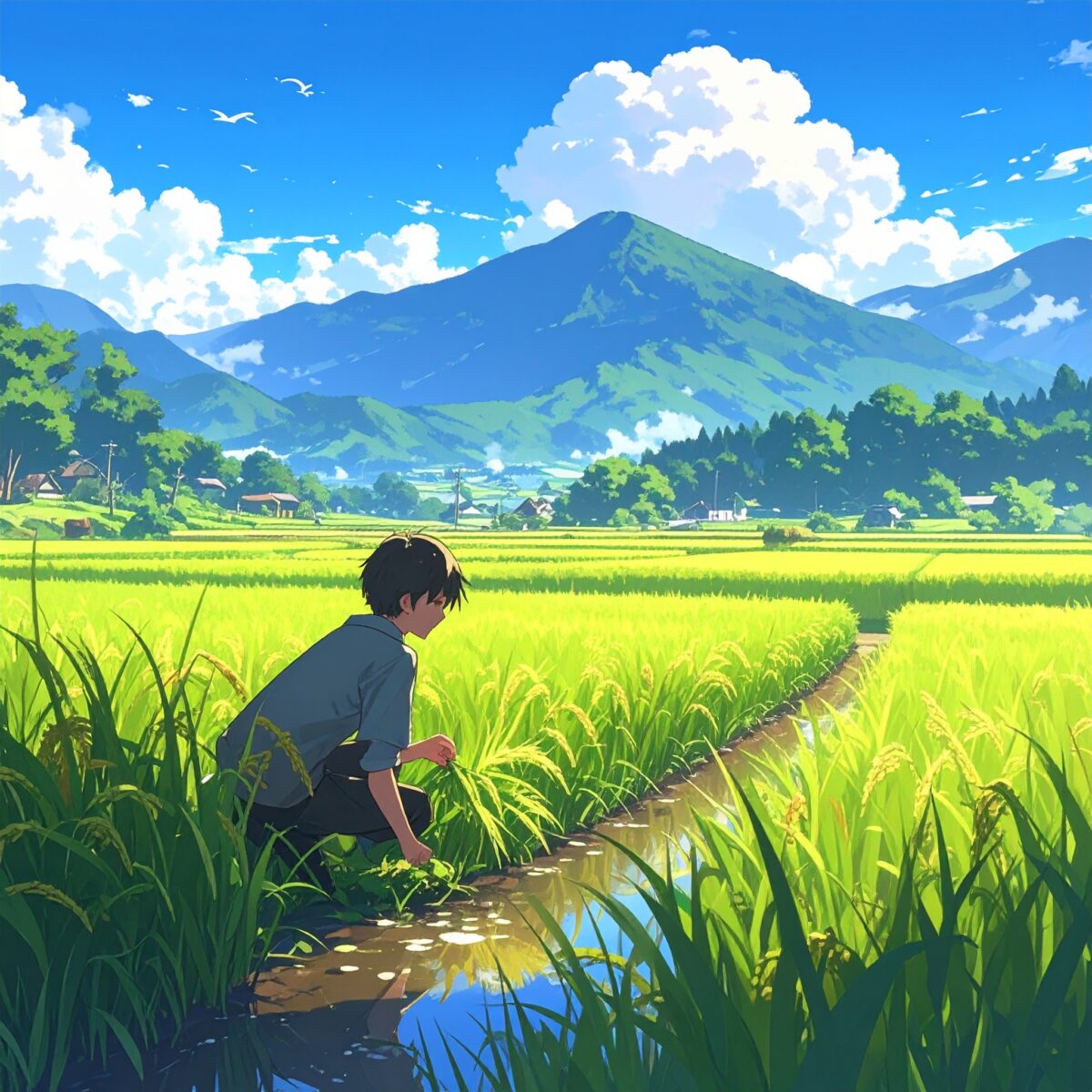“Itadakimasu”—a phrase uttered almost instinctively before a meal in Japan. While deeply embedded in daily life, how many truly understand the gratitude it expresses? Stepping barefoot into a rice paddy and planting seedlings with one’s own hands brings this simple word to life, grounding it in a visceral awareness of connection, effort, and appreciation.
Across Japan’s countryside and satoyama (village-mountain landscapes), rice planting experiences are offered to visitors of all ages, including families and international travelers. The moment your bare feet touch the water-filled field, a gasp escapes—startled by the cool, slick mud beneath. With every careful step, planting each tiny seedling in rhythmic intervals, you come to realize the physical labor and mental focus this task demands. And yet, a strangely satisfying fatigue lingers, tied to something deeper than the body.
Each delicate seedling will one day grow into stalks of rice, ultimately producing the grains that nourish daily life. To be even a small part of this transformation changes how one views a bowl of rice—not as something taken for granted, but as the result of human effort, natural forces, and time. This experience, especially for children, becomes a lasting impression—one that deepens respect for food and those who grow it.
Many rice planting programs are led by local farmers, who explain the workings of the rice fields and introduce traditional tools passed down through generations. Their voices carry the weight of experience, revealing the wisdom embedded in agricultural life, the interplay with the seasons, and the quiet dialogue with nature. Through their words and actions, you come to see farming not as a mere occupation, but as a way of life—one rooted in rhythm, patience, and reverence.

After the planting work is done, participants are often treated to freshly made local onigiri (rice balls) and miso soup. Eating steaming hot rice under the open sky, still covered in sweat and mud, is a joy beyond words. In every bite, one can taste not only the richness of the harvest but also the time spent working with one’s own hands and the gratitude for nature’s bounty. Rarely does the phrase “Itadakimasu” carry such profound meaning as it does in that moment.
These rice planting programs are often designed with families in mind, especially for children who rarely have a chance to experience mud or farm work in urban environments. Many programs incorporate elements of play—searching for frogs and insects, or learning traditional straw crafts and local folk art—allowing visitors to engage with the full rhythm of rural life.
For international visitors, this immersive experience offers a deep gateway into Japanese culture. Beyond simply knowing that “Japan is a country that grows rice,” participants come to feel the Japanese spirit of reverence for nature and harmony with the seasons. An increasing number of farms now provide English-speaking guides and multilingual materials, offering both cultural context and practical understanding of the farming process.
Rice planting is not just about placing seedlings into the soil—it is about stepping into nature and encountering the beginning of life’s cycle. To eat is to live. And to live is to be grateful. It is only by standing in the rice field that one comes to truly understand this seemingly simple truth.
“Itadakimasu” is not merely a polite phrase said with joined hands. Its meaning lies at the end of hands that are caked in mud and sweat—rooted in effort, humility, and respect for all that sustains life.




